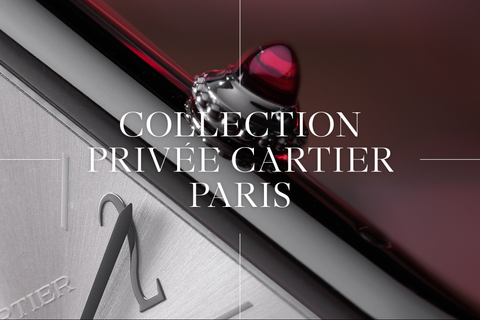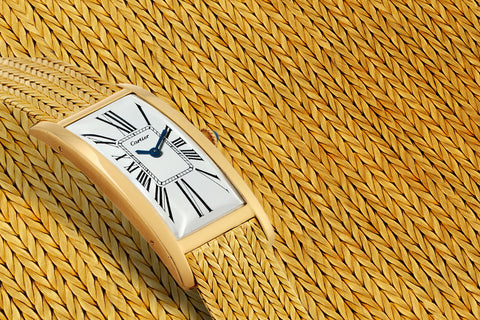This yellow gold Cartier Tank Cintrée* is one of a 150 piece collection that celebrated the centenary of the line in 2021. It features the desirable exploded Roman numerals, with case dimensions and features that are faithful to the original design. Powering it is the ultra-thin manual wind calibre 9780 MC. The watch, which still has it’s original stickers intact, comes with all its requisite boxes and paperwork.
Where did the Cintrée come from?
The origin of the Cartier Tank design is a well-known and often-told tale. Louis Cartier saw the new Renault tanks that were dominating the front line of the First World War and their symmetrical shape struck a chord. The result was the launch of a unique case shape that has become synonymous with the brand, having since been reimagined and adapted many times over. Possibly one of the most enigmatic and captivating of these variants is the focus of this article, the Cintrée. The story of how the Cintrée came to be is a little less clear. Initially released two years after the Tank, its elongated form was rather radical at the time. “We know exactly how the Tank was designed,” says Harry Fane, a vintage Cartier expert who has been handling these pieces for over forty years. “However, we don’t know when they sat down, and how they decided to design the Cintrée.”




Whilst we can’t point to a solid point of origin for this new shape, we can look at the period in which it was created for some useful context. “Wristwatches at the time were a very new thing,” Fane explains, “and getting men to wear a timepiece on their wrist, and not in their pocket, was no easy feat.” It is believed that this is part of the reason why the curved case was adopted. A watch which hugged the wrist seemed more comfortable and natural to wear than many of the other pieces being produced at the time, which had more rudimentary round or square designs. The Cintrée was an attempt to win over the sceptics. This plausible theory was put forwards by Franco Cologni in his book, Cartier: The Tank Watch, with no written records or official explanations put forwards by the jeweller for us to lean on.
The era in which the Cintrée was born certainly also influenced the design. The Roaring ‘20s were a period of economic prosperity following the First World War, which spawned a whole new set of cultural movements in the United States and Europe. In France, the decade was known as the “années folles” – or crazy years – emphasising the era's social, artistic and cultural dynamism. It was out with the old and in with the new. This is evident in the dramatic lines of the Cintrée, which captured the glamour and exuberance of the time, coupled with an embracing of Art Deco design principles. Measuring an astounding 46mm in length, it marked a rupture with the past.






















































































































































































































